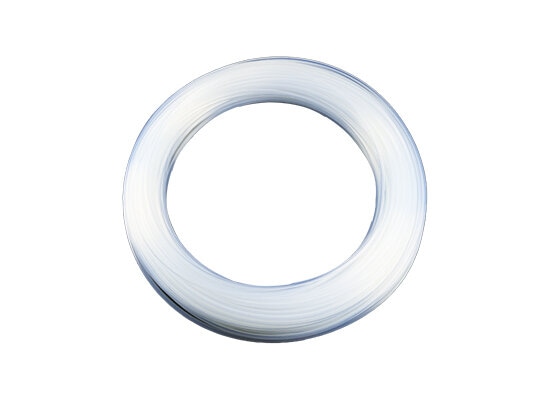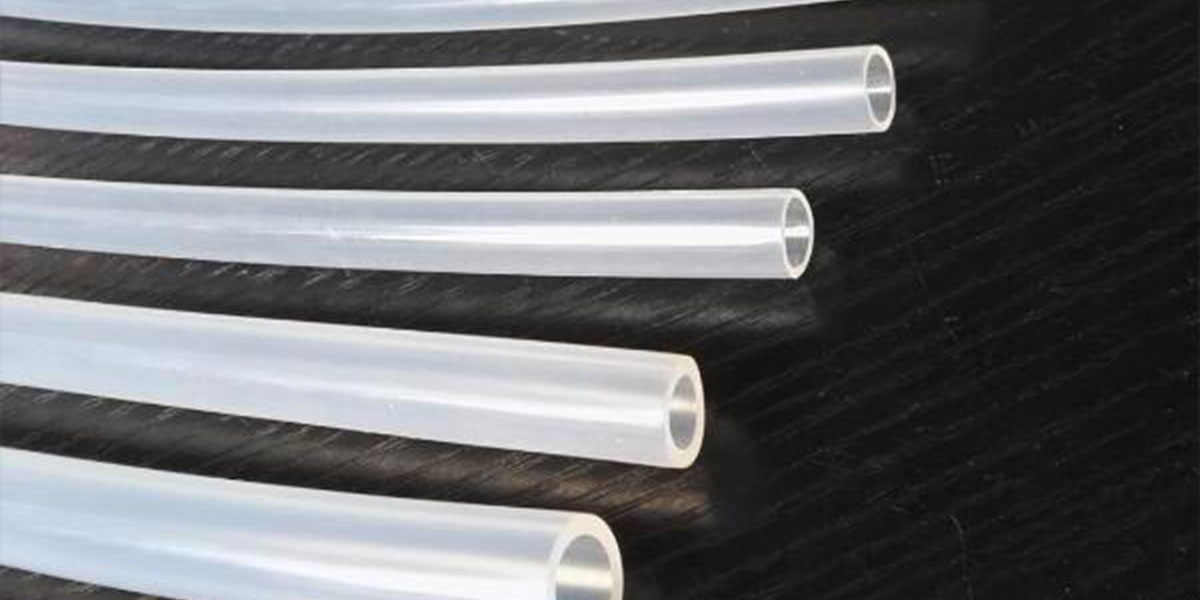
Although PTFE is corrosion-resistant and high-temperature resistant, it cannot be thermoplastic processed; Although FEP can be processed, its temperature resistance is not sufficient; Metal pipes are not corrosion-resistant; Ordinary plastic pipes lack purity and heat resistance. PFA tube is one of the few materials that can achieve "all four beauty", so it is very rare and high-value.
PFA tubing is a high-performance plastic tube extruded from PFA (Perfluoroalkoxy) resin, as known as Polyfluoroalkoxy+tubing,featuring exceptional chemical inertness, high temperature resistance, excellent transparency, and outstanding non-stick properties. It provides key functions such as chemical isolation, high-purity fluid delivery, high-temperature and high pressure resistance, and electrical insulation. Widely used in industries with stringent requirements for cleanliness, corrosion resistance, and thermal stability—such as semiconductor manufacturing, chemical processing, pharmaceuticals, biotechnology, food and beverage, and laboratory equipment.
◆ Excellent resistance to strong acid and bases
◆ Excellent resistance to high and low temperature
◆ Good chemical resistance stability
◆ Maintains elasticity under low temperature
The outer diameter (OD) of PFA pipes is standardized, and common sizes include the following:
| Inch size (OD) | Millimeter size (OD) |
| 1/16" | 1.59 mm |
| 1/8" | 3.18 mm |
| 3/16" | 4.76 mm |
| 1/4" | 6.35 mm |
| 3/8" | 9.53 mm |
| 1/2" | 12.7 mm |
| 3/4" | 19.05 mm |
| 1" | 25.4 mm |
| Material | Polytetrafluoro Ethylene |
| Appearance | Translucent or Transparent |
| Applicable medium | Strong acid, Strong bases, Oil |
| Embient and fluid temperature | -80'C~+260 C |
| Density | 2.12 – 2.17 g/cm³ |
| Pressure Range | 115~360psi |
According to PFA Tube's exceptional chemical resistance, thermal stability, and ultra-high purity, PFA tubing is widely used across industries that require reliable fluid handling in extreme environments.
◆ Semiconductor Manufacturing
◆ Pharmaceutical & Biotech
◆ Laboratory and Analytical Instruments
◆ Food Contact and Processing Systems
Both PFA and PTFE are all perfluoroalkoxy alkane+tubing and have outstanding chemical and thermal resistance, but PTFE is rigid and insoluble.PFA is a melt-processable thermoplastic, meaning it can be extruded into complex shapes and thin-walled tubing。
Compared to FEP, which is another melt-processable fluoropolymer, PFA tubing performs better in high-temperature environments, handles aggressive chemicals more reliably, and offers superior pressure crack resistance. However, FEP is typically more cost-effective and may be preferred for less demanding or lower-temperature applications.

If you're looking for high-purity PFA tubing manufactures tailored to your exact specifications, you need us. Our manufacturing technology is mature, machines operate efficiently, product quality is guaranteed, and we have professional product appraisal and technical personnel who can solve all customer problems.
Hurry up! Fokcaflow Targeting global customers and offer custom sizing, advanced fabrication options, and a wide range of pneumatic fittings to meet the unique demands of your industry.If you have any questions,For more detail you can contact us.
PFA and PTFE offer similar chemical and thermal resistance, but PFA Tubing is more flexible, transparent, and can be melt-processed, making it better suited for precision tubing applications.
PFA tubing can withstand continuous service temperatures up to 260°C (500°F) without degradation.
Yes, tube pfa is highly resistant to virtually all acids, including hydrofluoric, nitric, and sulfuric acid, even at elevated temperatures.
Pipe heating and melting refers to heating plastic tubing to a plastic state, utilizing the melting or softening properties of thermoplastic materials to shape, join, or modify the tubing through certain processing techniques. Simply put, it is the process of using heat to work on plastic pipes to achieve purposes such as forming, welding, bending, or flaring.
Efficient Forming:Heating softens or melts the plastic, allowing for rapid extrusion and injection molding of various complex shapes of PFA tubing to meet the requirements of related fittings.
Strong Connections:Through heat fusion welding, the ends of PFA tubing soften and fuse together, forming seamless and high-strength joints. This avoids the risk of leakage associated with mechanical connections.
High Flexibility:After heating, the tubing softens, making it easy to bend and flare, accommodating various complex piping designs and installation needs.
Improved Durability and Sealing:Heat fusion welding enhances the sealing of tubing joints, providing excellent corrosion resistance and pressure tolerance.
Reduced Material Waste:Most importantly, PFA tubing as a thermoplastic material can be recycled and reprocessed. Unused materials and scraps can be remelted and reused, making it environmentally friendly and cost-effective.
Links: www.fescolo.com(Pneumatic)
FOKCA ©1998-2025 All Rights Reserved Sitemap